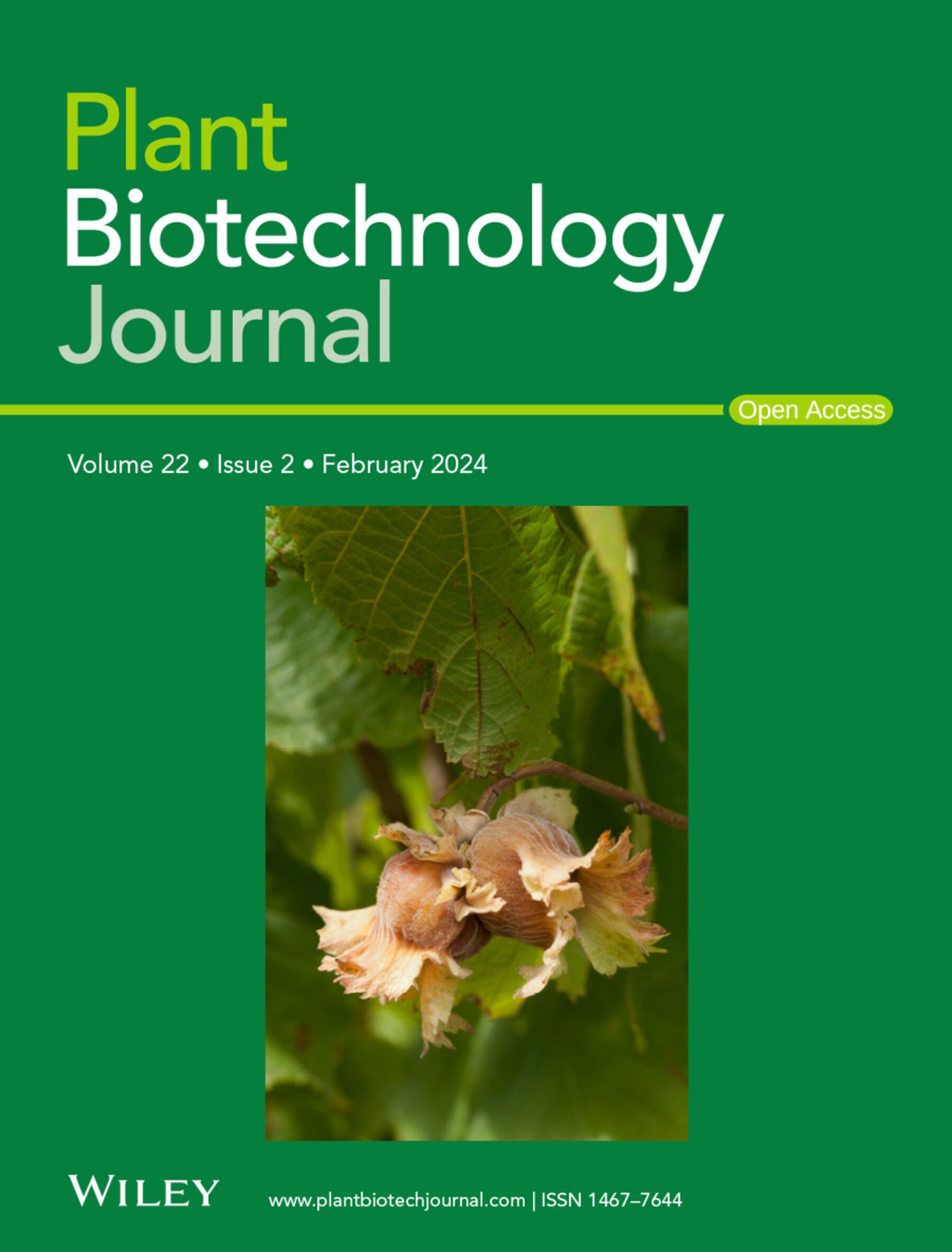CgABR1-CgFAD负调控柑桔果颈长度。
IF 10.1
1区 生物学
Q1 BIOTECHNOLOGY & APPLIED MICROBIOLOGY
引用次数: 0
摘要
柚子(Citrus maxima)是柑橘的一种基本品种,对甜橙、柠檬等柑橘的栽培有很大贡献。果颈是柚子的结构特征,果颈过长会降低果实的可食性。在这项研究中,我们组装了典型的短果颈品种‘平山’的端粒到端粒(T2T)无间隙参考基因组,以及典型的长果颈品种‘沙田’的染色体水平基因组。本研究利用长果颈品种(“关西”柚)与短果颈品种(“坪山”柚)杂交的节段群体,绘制了控制果颈长度的决定因素。我们在1号染色体27.5-30.5 Mb物理区域内发现了一个强峰,并发现了与果颈长度相关的52 bp缺失。此外,通过结合果颈发育的RNA测序数据和变异分析,我们确定了两个基因,一个编码乙烯应答转录因子(CgABR1),另一个编码fad依赖性尿酸羟化酶(CgFAD)。遗传转化证实,过表达CgABR1和CgFAD可以抑制果颈长度。DNA亲和纯化测序、电泳迁移率转移实验和双luc报告基因实验表明,CgABR1可以通过直接结合其启动子激活CgFAD的表达。综上所述,本研究构建了柚子T2T无间隙基因组,并鉴定了影响柑橘果颈长度的关键基因,为柑橘遗传改良和育种提供了重要资源和新基因。本文章由计算机程序翻译,如有差异,请以英文原文为准。
CgABR1-CgFAD negatively regulates the fruit neck length in citrus.
Pummelo (Citrus maxima) is a fundamental species of Citrus which contributes to most of the cultivated citrus, including sweet orange, lemon and etc. The fruit neck is a structural feature of pummelo, and a long fruit neck reduces the edible rate of the fruit. In this study, we assembled a telomere-to-telomere (T2T) gap-free reference genome for the typical short fruit neck cultivar, 'Pingshan' pummelo, and a chromosome-level genome for the typical long fruit neck cultivar, 'Shatian' pummelo. Here, we used a segment population derived from a cross between a long fruit neck cultivar ('Guanxi' pummelo) and a short fruit neck ('Pingshan' pummelo) cultivar to map the determinant controlling the fruit neck length. We identified a strong peak on chromosome 1 within the 27.5-30.5 Mb physical region and found a 52 bp deletion linked with the fruit neck length. Moreover, by combining RNA sequencing data of the fruit neck development and variation analysis, we identified two genes, one encodes ethylene-responsive transcription factor (CgABR1) and the other encodes FAD-dependent urate hydroxylase (CgFAD). Genetic transformation confirmed that overexpression of CgABR1 and CgFAD can inhibit fruit neck length. DNA affinity purification sequencing, electrophoretic mobility shift assays and dual-LUC reporter assays demonstrated that CgABR1 can activate the expression of CgFAD by directly binding to its promoter. In summary, we assembled a T2T gap-free genome for pummelo and identified the key genes for fruit neck length in citrus, offering an important resource and new genes for citrus genetic improvement and breeding programs.
求助全文
通过发布文献求助,成功后即可免费获取论文全文。
去求助
来源期刊

Plant Biotechnology Journal
生物-生物工程与应用微生物
CiteScore
20.50
自引率
2.90%
发文量
201
审稿时长
1 months
期刊介绍:
Plant Biotechnology Journal aspires to publish original research and insightful reviews of high impact, authored by prominent researchers in applied plant science. The journal places a special emphasis on molecular plant sciences and their practical applications through plant biotechnology. Our goal is to establish a platform for showcasing significant advances in the field, encompassing curiosity-driven studies with potential applications, strategic research in plant biotechnology, scientific analysis of crucial issues for the beneficial utilization of plant sciences, and assessments of the performance of plant biotechnology products in practical applications.
 求助内容:
求助内容: 应助结果提醒方式:
应助结果提醒方式:


